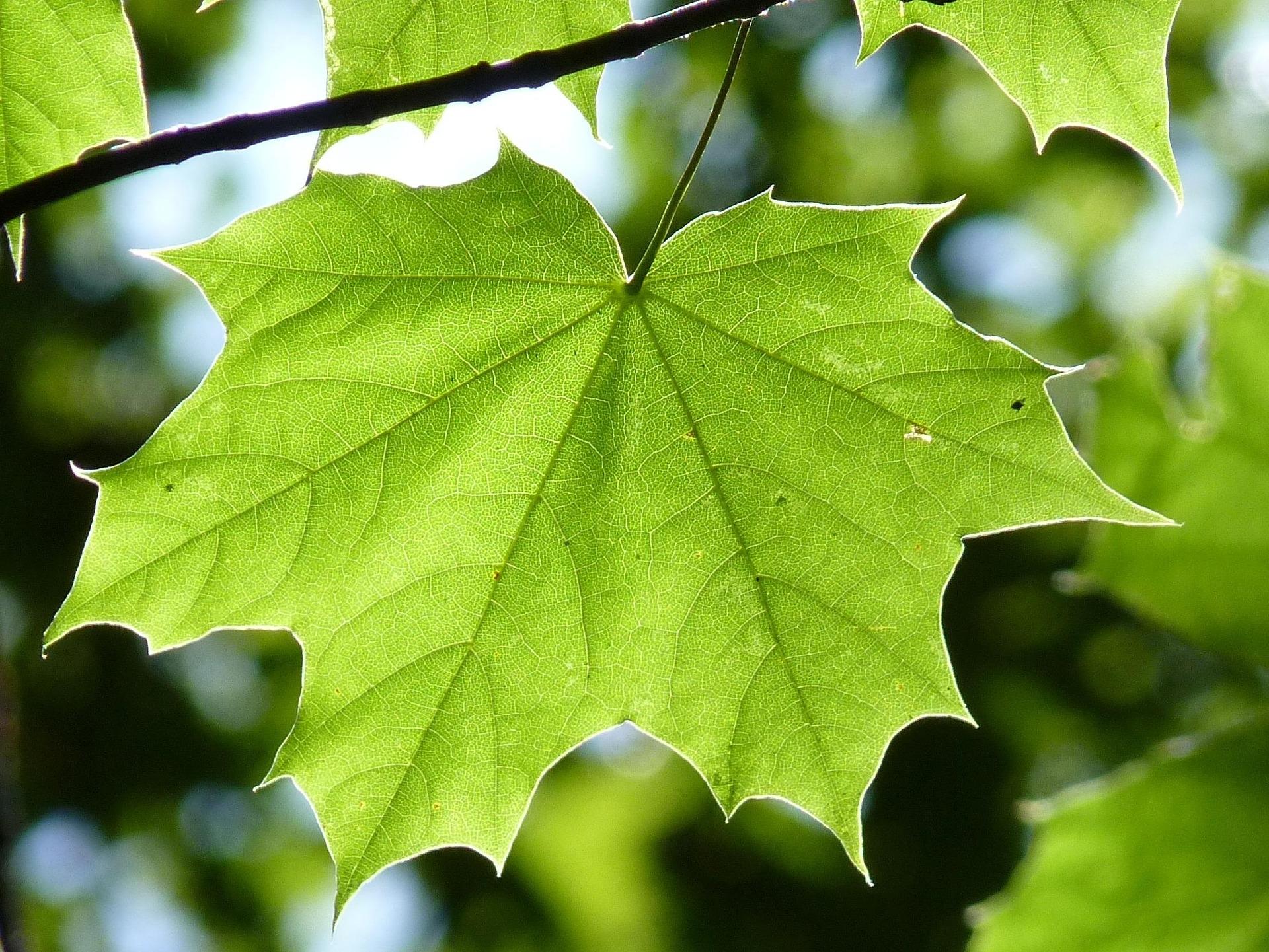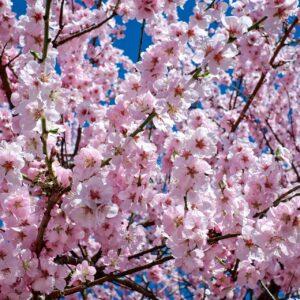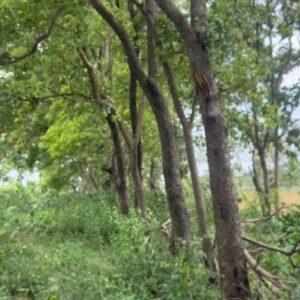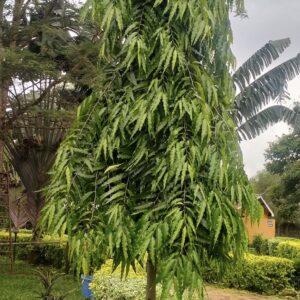– The Symbol of Autumn’s Beauty
The Maple Leaf Tree, a member of the Acer genus, is well-known worldwide for its stunning leaves, stately growth, and year-round attractiveness. Its distinctive five-lobed leaf—represented on the Canadian flag—and its stunning autumnal hues, which range from brilliant yellow to rich crimson, make it well-known.
Maple trees are adaptable, beautiful, and hardy, whether they are cultivated as shade trees, decorative focal points, or bonsai. The Red Maple (Acer rubrum), Sugar Maple (Acer saccharum), and Japanese Maple (Acer palmatum) are well-liked species.
🌿 Summary of Botany
Acer spp. is the scientific term.
Maple, Maple Leaf Tree, are the common names.
Sapindaceae is the family.
Kind: Deciduous flowering tree (some evergreen species in Asia)
Height: Varies between species (10 to 100 feet)
Leaves: Palmate, lobed with 3–9 segments; change into bright colors in the fall.
Flowers: Little, reddish or greenish-yellow in color; inconspicuous
Fruits: Winged samaras, sometimes referred to as “”helicopters”” or “”spinners.””
The length of a lifetime varies by species, ranging from 80 to over 200 years.
Requirements for Sunlight and Climate
Sunlight:
The majority of maples favor direct sunlight over partial shade.
Particularly in warm climates, Japanese maple thrives in partial shade.
Climate:
Do well in mild temperatures
Ideally suited for USDA zones 3–9 (depending on the species).
For the colors to develop properly, different seasonal variations are necessary.
Tolerance to Temperature:
Species that are resilient may withstand temperatures as low as -30°C.
Compared to other maples, Japanese maples are more prone to sunburn and heat stress.
Choose your species according to the climate: Japanese Maples for temperate climes and Sugar and Red Maples for colder ones.
💧 Watering Schedule
Young Trees (1–2 years):
Give water two to three times a week when the weather is dry.
Maintain a consistent moisture level in the soil, but avoid making it wet.
Mature Trees:
During dry periods, water at least once a week
Frequent shallow watering is worse than deep watering.
⚠️ Refrain from planting in regions with bad drainage since this leads to root rot.
Requirements for Soil
Kind:
loamy soil that is well drained and moist is ideal
Clay is tolerated when changed.
pH: Between 6.0 and 7.0, which is somewhat acidic to neutral.
Mulching
Around the base, place a 2–3 inch layer of organic mulch.
Maintains roots cool and wet while preventing weeds
Japanese maples thrive in slightly more acidic, well-aerated, well-draining soil.
需求 for Fertilizer
Young trees:
Balanced fertilizer (10-10-10) and light spring feeding
Trees at maturity:
Prior to new development in early spring, fertilize.
Slow-release fertilizers and organic compost work effectively together.
Excess nitrogen can cause weak branching or postpone fall color.
✂️ Pruning and upkeep
The best time to prune:
Prior to sap flow, in late winter or early spring
Simply light shaping; maples bleed sap if pruned too late.
Methods for pruning:
Cut down any branches that are dead, overlapping, or congested.
Avoid severe trimming since it compromises the structure.
Japanese maples can be trimmed gently to preserve their form or bonsai shape.
Techniques for Reproduction
Seeds:
requires cold stratification after being collected in the fall
Germination is slow and inconsistent.
Cutting:
Summer cuttings of softwood or semi-hardwood
For greater success, use rooting hormone.
Grafting
Grafting onto robust rootstock is the most common method of propagating ornamental kinds.
It is possible to grow from seed, although hybrids do not produce true to kind.
🐛 Diseases and Pests
Bugs:
Aphids
Insects of the scale
Leafhoppers
Caterpillars
Illnesses:
Verticillium wilt
Powdery mildew
Anthracnose
Prevent water from collecting on leaves by ensuring adequate air circulation. Minor infestations can be treated with neem oil.
Uses and Advantages
Shade: A large canopy provides great shade during the summer.
Attractive: beautiful autumnal hues and graceful shape
Popular with Japanese maple for tiny gardening is bonsai.
Maple syrup is produced by extracting sugar maple sap.
Wood: employed in the manufacture of furniture, flooring, and musical instruments
Wildlife: Birds and squirrels eat seeds and leaves for food and protection.
Perfect for temple grounds, huge lawns, urban gardens, and avenue planting.
✅ Conclusion
The Maple Leaf Tree is more than just a tree; it’s a seasonal festival that provides shade in the summer, a splash of color in the fall, and architectural magnificence in the winter. The maple is a trustworthy, iconic option for both city and natural settings, whether you are attracted by its symmetrical leaves, symbolic beauty, or versatility.”
Mapple Leaf
₨1,200.00
“The Maple Leaf Tree, which is generally used to describe trees from the *Acer* genus (particularly the Acer palmatum or Acer saccharum), is renowned throughout the world for its recognizable, deeply lobed leaves that, in the fall, change into beautiful hues of red, orange, and yellow. Maple trees are indigenous to Asia, Europe, and North America and are valued for their elegant shape, seasonal beauty, and cultural importance—particularly in Canada, where the maple leaf is a national emblem.
Maple trees flourish in well-drained, somewhat acidic soil in full sunlight to partial shade. They range in size from little decorative trees (like the Japanese Maple) to big shade trees (like the Sugar Maple). Some Maple Leaf Tree species provide sap that is used to manufacture maple syrup, in addition to having gorgeous foliage. The Maple Leaf Tree is perfect for gardens, streets, and landscapes since it adds timeless beauty and vibrant seasonal colors.”





Reviews
There are no reviews yet.